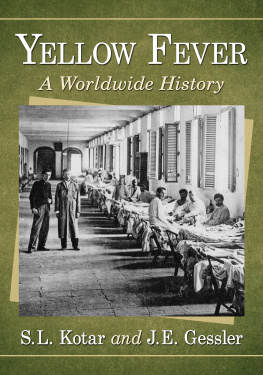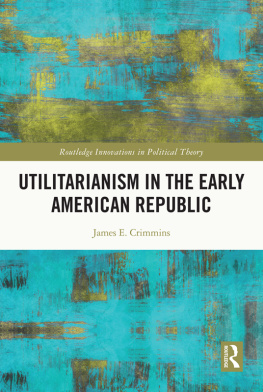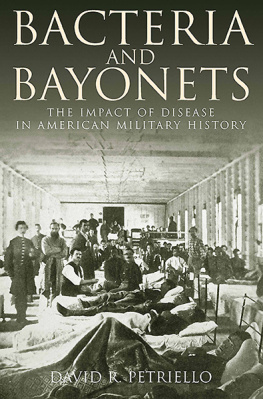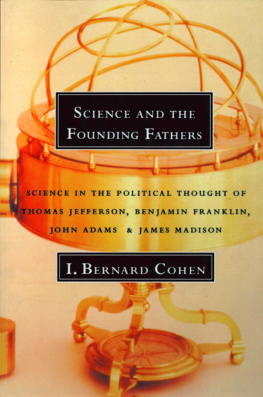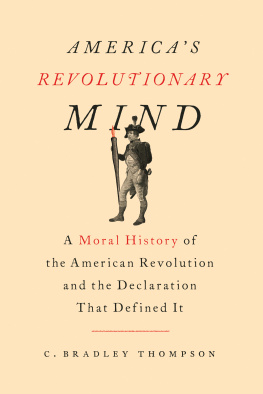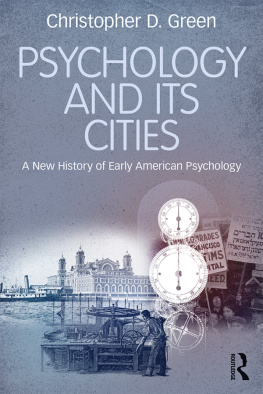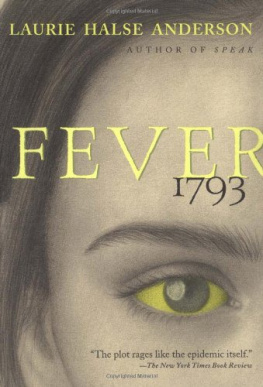Stanford University Press
Stanford, California
2016 by the Board of Trustees of the Leland Stanford Junior University. All rights reserved.
No part of this book may be reproduced or transmitted in any form or by any means, electronic or mechanical, including photocopying and recording, or in any information storage or retrieval system without the prior written permission of Stanford University Press.
Printed in the United States of America on acid-free, archival-quality paper
Library of Congress Cataloging-in-Publication Data
Names: Apel, Thomas A., author.
Title: Feverish bodies, enlightened minds : science and the yellow fever controversy in the early American republic / Thomas A. Apel.
Description: Stanford, California : Stanford University Press, 2016. | (c)2016 | Includes bibliographical references and index.
Identifiers: LCCN 2015041710 (print) | LCCN 2015042805 (ebook) | ISBN 9780804797405 (cloth : alk. paper) | ISBN 9780804799638 (ebook)
Subjects: LCSH: Yellow feverUnited StatesHistory18th century. | Yellow feverEtiologyHistory18th century. | EpidemicsUnited StatesHistory18th century. | DiseasesUnited StatesHistory18th century. | Medical sciencesUnited StatesHistory18th century. | DiseasesCauses and theories of causationHistory18th century.
Classification: LCC RA644.Y4 A64 2016 (print) | LCC RA644.Y4 (ebook) | DDC 614.5/41dc23
LC record available at http://lccn.loc.gov/2015041710
Typeset by Newgen in 11/14 Adobe Garamond
Feverish Bodies, Enlightened Minds
SCIENCE AND THE YELLOW FEVER CONTROVERSY IN THE EARLY AMERICAN REPUBLIC
Thomas A. Apel
STANFORD UNIVERSITY PRESS
STANFORD, CALIFORNIA
To Amanda,
for her love and patience
Contents
Acknowledgments
A number of people and institutions helped make this book possible, and I would like to thank as many of them as I can recall. First, the libraries and archives where so much of the research and writing of this book happened. The Georgetown University Library and its staff were always warm, receptive, and helpful. I also want to thank the staff at the Milton S. Eisenhower Library at the Johns Hopkins University, my home away from home, where I did the lions share of the reading and writing for this book. The libraries of UC Berkeley, the Library Company of Philadelphia, the Historical Society of Pennsylvania, the Historical Society of New York, the New York Academy of Medicine Library, the Maryland Historical Society, the Library of Congress, the National Library of Medicine, and the Columbia University Archives were all instrumental in the research for this book. Finally, I am indebted to the Huntington Library and the Jack Miller Center for a generous and productive fellowship spent during the summer of 2013 in beautiful San Marino, California.
I have been lucky to know a number of insightful scholars who have provided input and given feedback on parts of this book: Kathryn Olesko, Alison Games, Michael Kazin, James Collins, Josiah Osgood, Jessica Simmon Hower, Michael Hill, and Darcy Kern. My scholarship truly came of age with the help of John R. McNeill, who provided a model of scholarly excellence and originality, and my friend Adam Rothman, who was there from the time this project formed as an inchoate bundle of ideas, to the point where it took the form of a book. I also want to thank Kyle Roberts for his friendly advice over the years. Jan Golinski provided helpful commentary on Brandt, Friederike Sundaram, and the entire editorial staff at the Stanford University Press.
Finally, I want to thank my family. My parents instilled in me a love of books and learning, and they supported me when I conceived the notion of turning that love into a career. My brother and sister, Mickey and Hillary, have been companions and confidants since my earliest days. My wife, Amanda Reider, a scientist and mother, among many other roles, has helped me in ways that I cannot tally up or describe. And much love to my daughter, Ainsley Ione Apel, whose birth in 2014 makes this manuscript the second best thing I produced that year.
Introduction
In 1793, pestilence visited Philadelphia, the United States political capital and its center of economic, cultural, and scientific activity. Doctors quickly identified the disease. Referring to it alternately as the bilious remitting fever, the malignant fever, or even the synochus icteroides, they all nevertheless recognized it by its more common name: yellow fever. They hardly could have mistaken it. Yellow fever strikes in two distinct phases. In the first, victims exhibit fever, headache, chills, languor, and in certain cases nausea and vomiting. Patients then experience a remission, from which most emerge unscathed and without relapse. Those unfortunate enough to experience the second stage suffer an intensification of the fever, delirium, jaundice (caused by damage to the liver, which usually constitutes the final cause of death), and, finally, the dreaded black vomit, a foul mixture containing partially digested blood and an almost sure sign of approaching death. In modern settings, perhaps one in ten victims of yellow fever will die, but in the Philadelphia of 1793, a city of about 50,000 people, the disease exacted an even greater toll.
The story of Philadelphias great plague has been told many times before, but few emphasized the full extent of the yellow fever problem.
Yellow fever constituted the most pressing natural problem of the early national period. Besides the deaths, yellow fever incited frantic, mass evacuations. It halted commerce in the nations busiest port cities for months at a time and led to burdensome quarantines and expensive sanitary reform measures. On several occasions, the disease also interfered with the workings of the national government, forcing the president and Congress to evacuate Philadelphia, and leading ultimately to the removal of the capital to the Potomac. More alarmingly still, yellow fever eroded public virtue, the cornerstone of a healthy republic. In his popular Short Account of the Malignant Fever Lately Prevalent in Philadelphia (1793), the Irish printer Mathew Carey horrified readers with scenes of familial betrayal and ruthless self-interest, concluding that the fever produced a total dissolution of the bonds of society in the nearest and dearest connexions.
With the future of the republic and the lives of its citizens hanging in the balance, leading medical and scientific
The seeming intractability of yellow fever debate, no less than the urgency of the disease itself, tested and strained the fever investigators, altering as it did the nature of the problem. The crisis pushed them to explore fields of inquiry not typically associated with disease thought. Some composed massive histories of disease, hoping that the patterns of disease outbreaks would lead to some understanding of the cause of yellow fever. Others embraced the chemical revelations associated with Antoine-Laurent Lavoisier and examined the chemical makeup of the matter that caused yellow fever. Still others pondered the natural theology of yellow feverits purpose as it appeared from the evidence of design. By the end of the epidemic period, investigators of yellow fever had produced one of the most substantial and innovative, yet underexplored, outpourings of scientific thought in American history. In each area of study, the localists pushed the debate in their favor. By the end of the epidemic period, they had more or less settled the debate, and the contagionists either converted or retired from public view.
All this begs the question: If the investigators failed to determine the true cause of yellow fever, and if they only supported theories that are now dead and almost forgotten, why study their efforts? For generations, historians more concerned with tales of progress did not. A host of perspectives coming mainly from European history offer ways of evaluating and appreciating even the most seemingly outdated scientific views. These works have called attention to the way that knowledge is constructed, and the way that deconstructing knowledge yields insights about people and societies, their overarching philosophical and scientific notions, and the multifaceted historical contexts that influenced their understandings of the natural world. As Thomas Kuhn wrote of the matter, An apparently arbitrary element, compounded of personal and historical accident, is always a formative ingredient of the beliefs espoused by a given scientific community at a given time. But the yellow fever controversy still lacks a book-length study that considers it for what it ultimately wasa debate about nature and science, one that both exposed the foundations of early American scientific knowledge production and undermined them.


